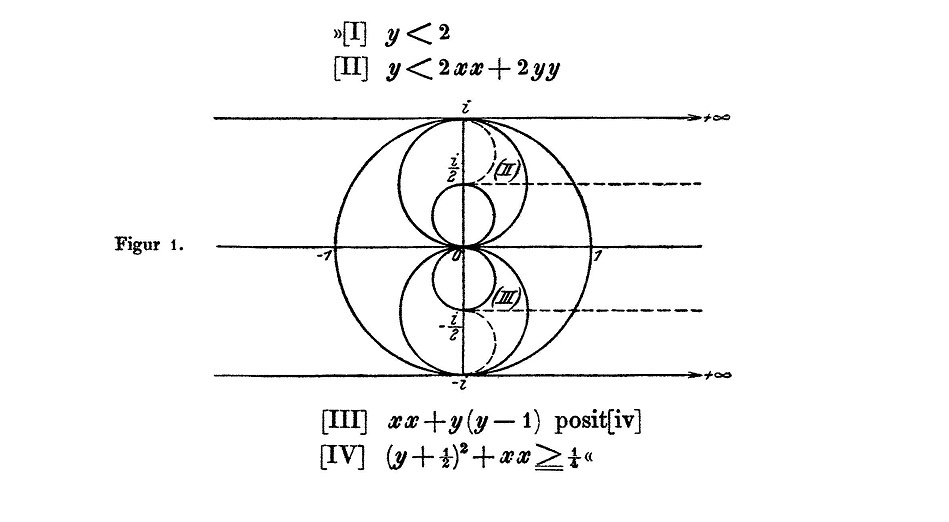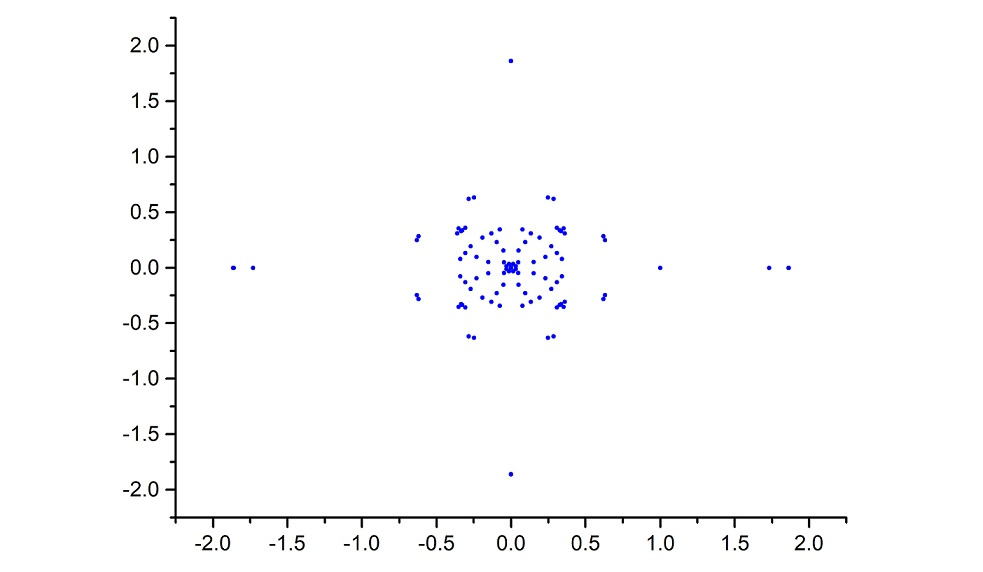算术-几何均值不等式等价于 Bernoulli 不等式
算术-几何平均值不等式有时称为 Cauchy 不等式:
\begin{equation} A_{n}=\displaystyle \frac {x_{1}+\cdots +x_{n}}{n}\geq (x_{1}\cdot \ldots \cdot x_{n})^{1/n}=G_{n} \qquad (\text {对一切}~x_k>0).\tag {AG} \end{equation}
对这个不等式 (其中\(n\in \mathbb {N}\) ), 在著作 [1] 与 [2] 中分别给出了 52 种和 74 种证明, 并且数学家仍然在发现新的证明.
更早些时候, Isaac Barrow (1670) 和 Jacob Bernoulli (1689) 下述不等式, 现今称之为 Bernoulli 不等式:
\begin{equation} x^{n}\geq 1+n(x-1) \qquad (\text {对一切}~x>0). \tag {B} \end{equation}
关于 Bernoulli 不等式的历史、推广与不同证明, 可以从文章 [5] 中读到.
在这篇短文中, 我将证明这两个不等式其实等价, 即从其中一个可以推出另一个. 这已经为 [4, 定理 3] (也见 [2], p. 213, 以及 [5, 定理 1] 所注意到, 但此处我给出的是更简单的论证.
定理. 不等式 (AG) 与不等式 (B) 等价.
证明. (B) \(\Rightarrow \) (AG). 由于 \(\displaystyle \frac {A_{n}}{A_{n-1}} >0\), 由 Bernoulli 不等式 (B) 有
\begin{align*}
\left (\frac {A_{n}}{A_{n-1}}\right )^{n} \geq &1+n\left (\frac {A_{n}}{A_{n-1}}-1\right )\\
=&\frac {A_{n-1}+nA_{n}-nA_{n-1}}{A_{n-1}}\\
=&\frac {nA_{n}-(n-1)A_{n-1}}{A_{n-1}}\\
=&\frac {x_{n}}{A_{n-1}}
\end{align*}
或
\begin{equation} A_{n}^{n}\geq x_{n}\cdot A_{n-1}^{n-1}. \tag {C} \end{equation}
现在连续应用不等式 (C), 我们得到
\begin{align*} A_{n}^{n}&\geq x_{n}\cdot A_{n-1}^{n-1}\\ &\geq x_{n}\cdot x_{n-1}\cdot A_{n-2}^{n-2} \\ &\geq \cdots \\ &\geq x_{n}\cdot x_{n-1}\cdot \ldots x_{2}\cdot A_{1}^{1}\\ &=x_{n}\cdot x_{n-1}\cdot \ldots x_{2}\cdot x_{1}\\ &=G_{n}^{n}, \end{align*} 从而\(A_{n}\geq G_{n}.\)
(AG) \(\Rightarrow \) (B). 对\(n= 1\), (B) 为等式. 若\(n\geq 2\) 且 \(0<x\displaystyle \leq 1-\frac {1}{n}\), 则\(x^{n}>0\geq 1 +n (x-\ 1)\), 即 (B) 成立. 因此, 我们可以假定 \(n\geq 2\) 且 \(x>1-\displaystyle \frac {1}{n}\). 则 \(1 + n(x-1)>0\), 现在将不等式 (AG) 应用于 以下 \(n\) 个正数:
\[1+n(x-1), \quad \underbrace {1,1,..,1}_{(n-1)}.\]
我们得到
\begin{align*} x^{n}&=\left (\frac {[1+n(x-1)]+1+\ldots +1}{n}\right )^{n}\\ &\geq [1+n(x-1)]\cdot 1\cdot \ldots \cdot 1\\ &=1+n(x-1)\ , \end{align*} 不等式 (B) 得证. 定理证毕.\(\blacksquare \)
根据定理可知, 得到不等式 (AG) 的一个简单证明的方法是, 给出不等式 (B) 的一个简单证明. 这里就有一个:
\begin{align*} x^{n}-1-n(x-1)&=(x-1)(x^{n-1}+x^{n-2}+\ldots +1)-n(x-1)\\ &=(x-1)(x^{n-1}+x^{n-2}+\ldots +1-n)\\ &\geq 0. \end{align*} 最后一个不等式成立是因为, 我们有
\[x^{n-1}+ x^{n-2}+\ldots +1 \begin {cases} \geq n, &\text {若} x\geq 1,\\ \leq n, &\text {若} x\leq 1, \end {cases} \]
于是 (B) 得证, 从而根据定理, (AG) 也得证. 由 (B) 来证明 (AG) 的其他方法曾在 [6] 和 [3] 中给出.
参考文献
[1] P. S. Bullen, D. S. Mltrinovlč, and P. M. Vaslč, Means and their lnequalities, Reldel, Dordrecht, 1988.
[2] P. S. Bullen, Handbook of Means and their Inequalities, Kluwer, Dordrecht, 2003.
[3] M. D. Hirschhorn, The AM-GM Inequality, Math. Intelligencer 29, 7 (2007).
[4] L. Mallgranda, Why Hölder’s Inequality Should be Called Rogers’ Inequality, Math. Inequal. Appl. 1, 69-83 (1998).
[5] L. Maligranda, Bernoulli Inequality–Over 300 Years of History, in: Around Uernoullts, \(19^{\textrm {th}}\) All Polish Conference on History of Mathematics (June 6-10, 2005, Zamośč), Lublin Technical University Publisher, Lublin, 2006, 31-62 (in Polish).
[6] D. Rüthing, Proofs of the Arithmetic Mean–Geometric Mean Inequallty, lnt. J. Math. Educ. Sci. Technology 13, 49-54 (1982).
| 作者: | Lech Maligranda |
| 译者: | 林开亮,西北农林科技大学理学院 |
| 来源: | The Mathematical Intelligencer 34 (2012), 1–2. 原文标题 The AM-GM Inequality is Equivalent to the Bernoulli Inequality. |




